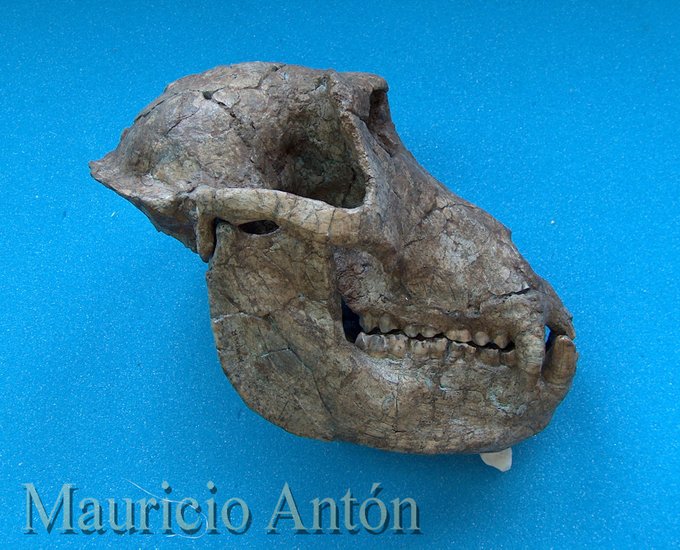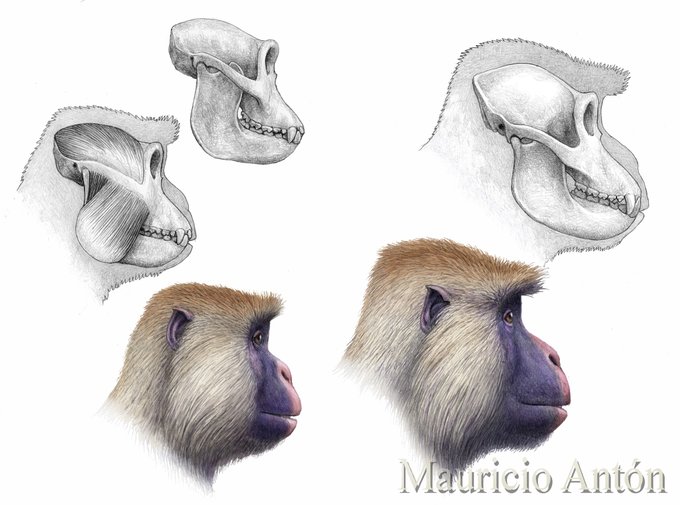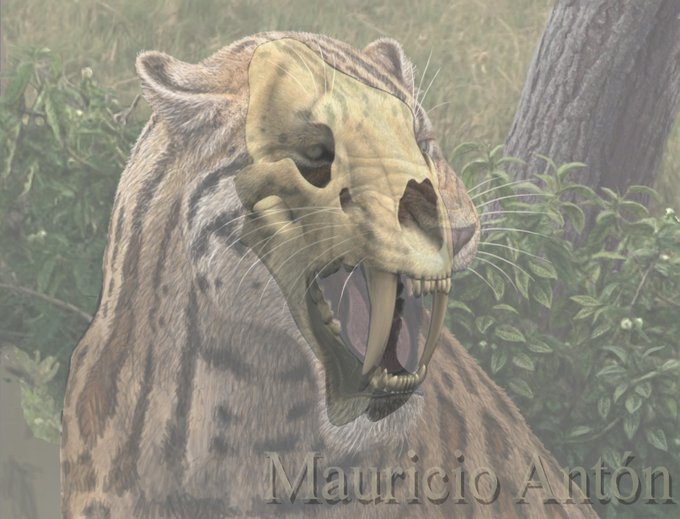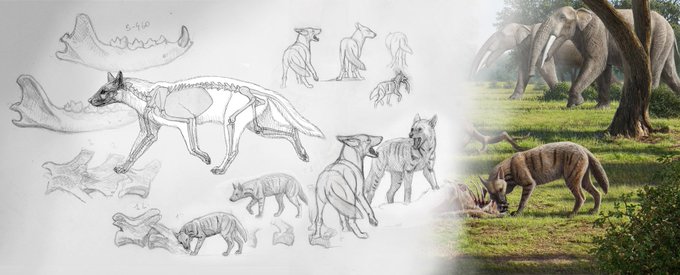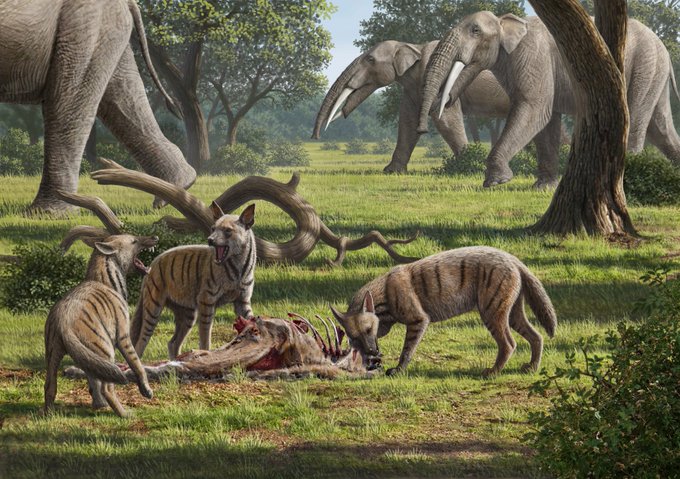For this #FossilFriday, admire the Homotherium skull from Perrier, and read the Smithsonian coverage of our recent research on its facial appearance! https://t.co/yySNrmPZyY
The space between the upper canines and the mandible was very narrow, leaving no room for the lips when the jaw was closed, and only the very tips of the canines protruded below the high chin. These features make it likely that the lower lip enveloped the upper canines in life
One of the most amazing fossils I have studied is KNM ER 18925, a complete skull and mandible of Theropithecus oswaldi that allowed me to reconstruct the animal's head with unusual confidence. Exepctional specimens like this are a paleoartist's dream! #FossilFriday
Today I celebrate the privilege of collaborating with some of the most wonderful women in paleontology, like Meave Leakey and Nina Jablonski. Back in 2004 I worked with them on the study of amazing fossils of Rhinocolobus and other fossil monkeys from Koobi Fora. What a ride!
To reconstruct the sabretooth Lokotunjailurus I started by sketching the fossils at the National Museums of Kenya in Nairobi. Then I combined sketches and photos to draw the articulated neck and skull. Finally I painted the animal killing a hapless Hipparion. @fossilfriday
People often ask me what is my favourite prehistoric animal...well, I suppose I would say Megantereon! I have drawn and painted this sabretoothed cat many times, and often I use a 3D model of the skull as reference to make sure that I stick to its unique morphology
From digital 3D sculpting to pencil sketching to digital painting... such was the process of reconstructing Homo naledi for the cover illustration of "Our Origins". Going in and out of the digital realm with such naturality would have seemed crazy to me, not so long ago!
We met this fine wildebeest in Savuti and he posed for us as if saying "see, I am a wildebeest and I am worth a look, too!". It is wonderfully adapted to a nomadic life on the African plains, and its stocky neck is perfect to withstand wild blows during horn-werstling fights.
Earliest #hyaenids were different from modern, huge bone-crackers like Crocuta. Protictitherium, from the Miocene of Batallones, was no larger than a jackal and had a varied diet including carrion. From fossils to sketches to full reconstruction #fossilfriday
Reconstructing the amphicyonid Magericyon is a complex process from the fossil to the virtual model to the finished artwork... and beyond. Check the latest blog post https://t.co/V7EXkXCnav





